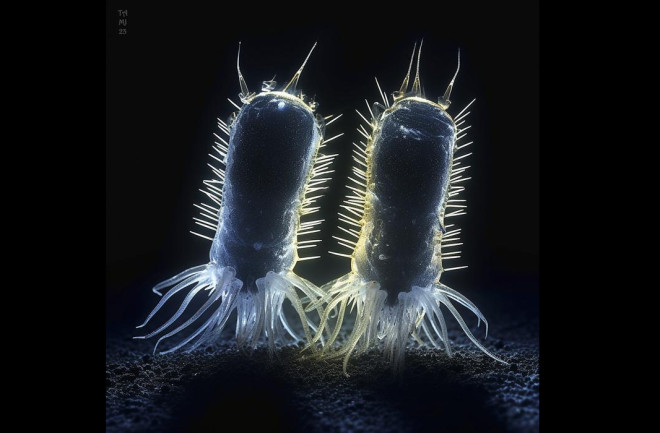A new paper claims to have discovered a “lost world” of microscopic organisms that lived at least 1.6 billion years ago at a time when the planet’s waterways were full of bacteria.
What these organisms looked like, scientists can only speculate, but they have proposed that the lost creatures were tiny predators that hunted said bacteria. The discovery fills in a large gap in the history of complex, eukaryotic life on Earth.
Finding Protosteroids
Researchers from the Australian National University and elsewhere found evidence of the so-called “Protosterol Biota” inside a 1.6-billion-year-old sedimentary rock recovered from the bottom of the ocean near what is now Australia’s Northern Territory.
Read More: What Are the Oldest Fossils in the World?
Inside, they found fossilized fat molecules that held evidence of the biota like a microscopic time capsule. Scientists had previously overlooked the tiny “protosteroids” because of their unusual configuration.
“Once we knew what we were looking for, we discovered that dozens of other rocks, taken from billion-year-old waterways across the world, were also oozing with similar fossil molecules,” says Jochen Brocks, a professor of geobiology, in a press release.
What Were the Early Predators Like?
Along with researcher Benjamin Nettersheim, Brocks has proposed that the organisms were larger than the bacteria they consumed and served as the world’s first predators. The creatures would have thrived from about 1.6 billion years ago until 800 million years ago, the time of the “Tonian Transformation.” This is when more complex life forms, such as fungi and algae, began to proliferate.
“Just as the dinosaurs had to go extinct so that our mammal ancestors could become large and abundant,” Brocks says, “perhaps the Protosterol Biota had to disappear a billion years earlier to make space for modern eukaryotes.”
The discovery extends the family tree of complex life back beyond the Last Eukaryotic Common Ancestor (LECA), another little understood organism that lived more than 1.2 billion years ago. All humans, and other creatures with nucleated cells, descended from LECA, but Nettersheim says Protosterol Biota stand as even earlier figures in the human lineage.
The End of a Eukaryotic Puzzle
Scientists have long searched for early eukaryotes and wondered why the early oceans appeared to have been one big “bacterial broth,” Brocks says. “One of the greatest puzzles of early evolution scientists have been trying to answer is, why didn’t our highly capable eukaryotic ancestors come to dominate the world’s ancient waterways? Where were they hiding?"
According to Brocks in the press release, “we show that the Protosterol Biota were hiding in plain sight and were in fact abundant in the world’s ancient oceans and lakes all along.”
Read More: Oldest Fossil Fungi Hints at Early ‘Modern’ Life

